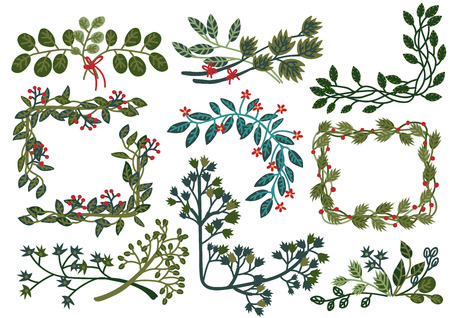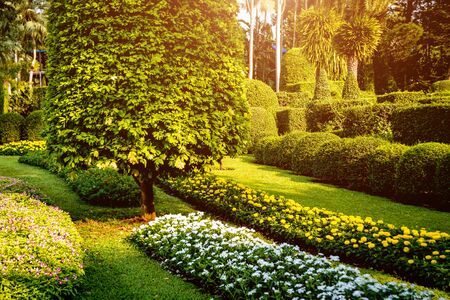Introduction to English Garden Traditions
England’s gardens are celebrated worldwide for their beauty, variety, and historical depth. The nation’s landscapes are shaped by centuries of evolving tastes, philosophies, and social movements. Broadly, English gardens fall into two distinct traditions: the formal garden and the informal garden. Formal gardens—often associated with stately homes and royal palaces—are rooted in Renaissance ideals brought over from Europe in the 16th and 17th centuries. These spaces are defined by symmetry, geometric layouts, clipped hedges, and a strong sense of order, intended to showcase human control over nature. In contrast, the informal or ‘naturalistic’ English garden emerged as a reaction to this rigid style during the 18th century. Inspired by Romanticism and a renewed appreciation for native landscapes, informal gardens favour flowing lines, organic planting schemes, and a gentle blending with the surrounding countryside. Both styles reflect broader cultural trends—formality aligning with power and precision, informality with freedom and pastoral idealism. Together, they form a rich tapestry that continues to shape how people across England experience and cherish their green spaces today.
2. Defining Formal and Informal Garden Styles
When exploring iconic gardens across England, it is essential to understand the defining features that distinguish formal and informal garden styles. Both approaches have deeply influenced English horticultural heritage, yet their design principles, layout, and maintenance methods stand in marked contrast.
Key Characteristics of Formal and Informal Gardens
| Formal Gardens | Informal Gardens | |
|---|---|---|
| Layout | Symmetrical, geometric patterns; structured pathways; clear focal points such as fountains or statues | Asymmetrical, flowing lines; organic shapes; naturalistic arrangement with meandering paths |
| Planting Schemes | Orderly beds, clipped hedges, topiary, repetitive planting; emphasis on uniformity and precision | Mixed borders, cottage-style plantings, native species; emphasis on biodiversity and visual spontaneity |
| Maintenance | High input: regular pruning, shaping, and seasonal displays to maintain strict order | Lower input: relaxed approach to pruning; encouragement of self-seeding and natural growth patterns |
| Atmosphere | Elegant, controlled, often reflecting status or grandeur | Relaxed, welcoming, evoking a sense of wildness or rural charm |
The Philosophy Behind Each Style
Formal gardens—such as those found at Hampton Court Palace—reflect an architectural mindset where nature is shaped to demonstrate order and human ingenuity. They often serve as a symbol of power or sophistication. In contrast, informal gardens—exemplified by the likes of Sissinghurst Castle Garden—embrace the irregularities of nature and foster a more intimate connection with the landscape.
The Enduring Appeal in England
These distinct styles continue to shape both public and private gardens throughout England. Whether meticulously planned or delightfully unrestrained, understanding these foundational elements enriches our appreciation of the country’s most iconic garden spaces.

3. Iconic Formal Gardens Across England
England’s formal gardens have long stood as emblems of elegance and order, deeply rooted in the nation’s horticultural heritage. These meticulously crafted landscapes are often found gracing the grounds of stately homes and royal palaces, where centuries of tradition meet artistic innovation. Among the most celebrated examples is the world-renowned Kew Gardens in London, a UNESCO World Heritage Site famed for its geometric parterres, ornate topiary, and sweeping vistas. Similarly, the gardens at Hampton Court Palace showcase the grandeur of Tudor and Baroque influences, boasting symmetrical layouts, intricate knot gardens, and long avenues lined with clipped yews.
Key Elements of the English Formal Garden
What sets these spaces apart as quintessentially ‘English’ are their hallmark features: strict symmetry, well-defined borders, and an emphasis on structure.
Parterres and Topiary
The use of parterres—elaborate patterns created with low hedges—and sculpted topiary shapes is a defining characteristic. These elements not only display horticultural skill but also reflect a sense of restraint and refinement that typifies English taste.
Avenues and Water Features
Sweeping tree-lined avenues draw the eye towards focal points such as statues or ornamental ponds, creating a sense of perspective and harmony. Water features, from grand fountains to reflective pools, add tranquillity while underscoring the garden’s architectural precision.
The Role of Historic Estates
Beyond royal sites, many historic estates like Sissinghurst Castle Garden and Blenheim Palace offer superb examples of formal design. Their enduring appeal lies in their ability to blend artistry with functionality—serving both as places of leisure and living expressions of national identity.
To walk through these iconic English formal gardens is to experience centuries of cultivated beauty, where every hedge and pathway tells a story steeped in local history and cultural pride.
4. Iconic Informal Gardens Across England
When discussing gardens that truly embody the spirit of the English countryside, informal gardens stand out as cherished spaces. These gardens, often described as romantic or naturalistic, are celebrated for their relaxed layouts, painterly planting schemes, and seamless blending with their rural surroundings. Unlike formal gardens, which prioritise symmetry and order, informal gardens evoke a sense of gentle wildness and spontaneous beauty.
Cottage Gardens: Quintessentially English
The cottage garden is perhaps the most iconic example of England’s informal gardening tradition. Characterised by exuberant borders packed with perennials, herbs, and climbers, these gardens thrive on variety and seasonal interest. The mix of colours and textures feels unplanned but is underpinned by a deep understanding of plantsmanship. Famed examples include the gardens at Sissinghurst Castle in Kent and Hidcote Manor in Gloucestershire, where winding paths lead visitors through clouds of lavender, foxgloves, roses, and hollyhocks.
Naturalistic Landscapes: Embracing the Wild
Some of England’s most lauded informal gardens take inspiration directly from nature. Designed to look almost untouched, these spaces use sweeping drifts of native grasses and wildflowers to create landscapes that feel both timeless and contemporary. The work of designers like Gertrude Jekyll and more recently Tom Stuart-Smith has popularised this approach. Great Dixter in East Sussex exemplifies this philosophy; its meadows and mixed borders demonstrate how careful planning can result in apparent informality.
Celebrated Informal Gardens Table
| Garden | Location | Style Features |
|---|---|---|
| Sissinghurst Castle | Kent | Cottage garden rooms, lush borders, climbing roses |
| Great Dixter | East Sussex | Wildflower meadows, naturalistic planting, mixed borders |
| Barnsdale Gardens | Rutland | Thematic areas blending structure with relaxed planting |
This enduring fondness for informality reflects a broader appreciation for the unpredictability and charm of the English landscape itself. Informal gardens not only delight visitors but also encourage biodiversity and sustainable gardening practices—further cementing their place at the heart of England’s horticultural heritage.
5. Influence on British Culture and Daily Life
The legacy of both formal and informal gardens in England extends far beyond their horticultural boundaries, weaving deeply into the fabric of British culture and everyday life. These distinctive garden styles have come to symbolise aspects of national identity—order, creativity, tradition, and an appreciation for natures beauty. The structured symmetry of formal gardens reflects a historical fondness for discipline and grandeur, while the relaxed, meandering forms of informal gardens evoke the English spirit of individuality and a gentle approach to life.
Gardening itself is a cherished pastime across Britain, with millions dedicating time to tending their own plots or allotments. This passion is reflected in leisure activities that revolve around gardens—be it enjoying afternoon tea surrounded by manicured borders or taking a stroll through a public park shaped by either formal or naturalistic principles. Gardens serve as communal spaces where neighbours meet, families gather, and children play, strengthening social bonds and nurturing local pride.
Annual events such as the RHS Chelsea Flower Show and Hampton Court Palace Garden Festival attract visitors from across the country and abroad, celebrating innovative design while honouring traditional techniques. These shows not only spotlight iconic examples but also inspire amateur gardeners to experiment with styles at home. Village fêtes often feature open garden days, encouraging community participation and fostering a shared sense of stewardship for local green spaces.
In essence, the influence of England’s iconic gardens reaches into daily routines and cultural milestones alike. Whether through the spectacle of a grand estate or the intimacy of a cottage garden, these landscapes shape rituals, encourage outdoor living, and continue to define what it means to be part of British society.
6. Contemporary Trends and Preservation Efforts
Today, English gardens are experiencing a renaissance shaped by both tradition and innovation. Modern garden designers across England often draw inspiration from the nation’s iconic formal and informal landscapes, yet there is a noticeable trend towards blending these two distinct styles. This hybrid approach can be seen in newly created gardens that pair structured hedges or geometric layouts with more naturalistic planting schemes, reflecting the contemporary desire for both order and wildness. Designers like Tom Stuart-Smith and Dan Pearson exemplify this movement, embracing native species and ecological principles while still referencing classical motifs.
In urban settings, public spaces increasingly incorporate green infrastructure that echoes historic gardens—think of London’s community gardens or city squares with clipped box borders alongside wildflower meadows. Such projects not only beautify modern environments but also foster biodiversity and well-being among residents. Sustainability has become paramount: there is greater emphasis on drought-resistant plants, water conservation systems, and organic gardening practices, ensuring that new gardens are resilient in the face of climate change.
The preservation of historic gardens remains a major concern for heritage organisations such as the National Trust and English Heritage. These institutions undertake meticulous restoration projects to protect beloved sites like Hidcote Manor Garden or the Capability Brown landscapes at Stowe and Blenheim Palace. Restoration often involves extensive research into original planting plans, materials, and techniques to maintain authenticity. At the same time, efforts are made to adapt these spaces for contemporary enjoyment—improving accessibility, providing educational programmes, and hosting cultural events that engage new audiences.
The challenge lies in balancing conservation with adaptation: how to safeguard the essence of iconic gardens while allowing them to evolve with changing tastes and environmental pressures. Community involvement plays a crucial role here; many gardens rely on volunteers for maintenance and interpretation, helping to foster a sense of shared ownership and stewardship.
Ultimately, England’s gardens—both formal and informal—are living documents of cultural history as well as dynamic expressions of present-day values. Through thoughtful design innovation and dedicated preservation work, these cherished landscapes continue to inspire gardeners and visitors alike, ensuring their legacy endures for generations to come.


